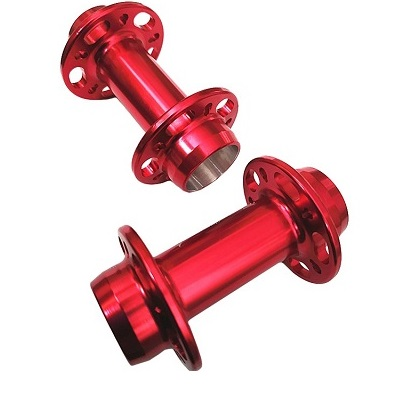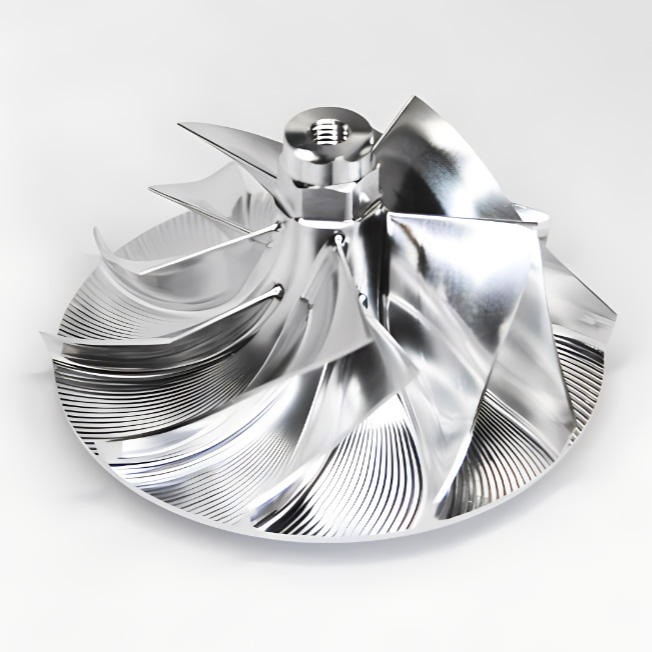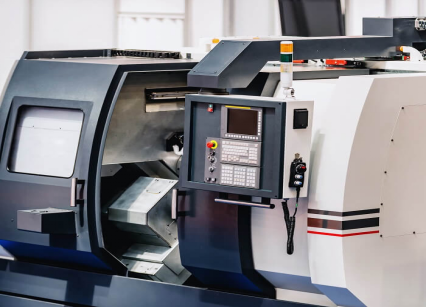Casting vs Machining: Choosing the Best Manufacturing Process
 May 13,2025
May 13,2025

We hope you have an idea of the manufacturing processes used to make different components for the respective applications. These manufacturing processes include welding, powder metallurgy, forming, injection moulding, etc. Casting and machining are manufacturing processes, but used both serve different purposes in the field. This article will help you understand these processes and then how to choose one of them according to your requirements. So, let's begin with the introduction of Casting:

What Is Casting?
You see different complex-shaped parts like turbine blades, engine blocks, etc. These complex shapes are transformed into real-life applications using the casting process. In casting, the molten metal is poured into the mould of the desired shape, then solidification occurs, and the molten metal is converted into the desired shape.
Overview of Casting Process
The casting process is a manufacturing process which is mainly used for metals. This process consists of two steps, i.e. Melting and Solidification. In melting, we convert the solid metal into a liquid form, then it is poured into the mould and then air cooling for solidification. It has many types, for instance,
Sand Casting
In this type, the mould is made of sand. Knives, etc., are made using sand casting. Sand particles are strongly adhered to each other due to the binder in the sand. Molasses is commonly used as a binder in sand casting. It is used for large parts and is cost-effective.
Die Casting
In die casting, a mould made of steel is used for casting metals. This type is common for Al and Al alloys. Gears are manufactured using this casting type.
Investment Casting
In this type of casting, the moulds are made of wax. It is used for critical applications such as turbine blades of a jet. It provides a surface finish of (Ra 1.6–3.2 µm), which is considered smooth as compared to other types.
Key Benefits of Casting
The following are some key benefits of casting:
Better for Large Volumes
Since the moulds can be used to produce more than one unit, which reduces the price per unit, it is best for large-volume production.
Ability to Create Complex Geometries
Once a mould of the desired shape is made, it can be used for multiple parts. Easily complex shapes are produced through this process, i.e. pump impellers.
What Is Machining?
Machining is another common method of manufacturing components with high precision. It uses cutting operations mainly to transform raw material into the desired shape.
Overview of CNC Machining

The machining process produces different parts by removing the excessive material through cutting. There are many cutting tools available, like hacksaw, laser-cutting, CNC, etc. For high precision parts production, CNC machines are often used.
Milling
Multiple rotating cutting tools are used to remove the excessive material from the workpiece and to create the product. The milling process is mainly used to create difficult-to-design shapes.
Turning
The turning process is mainly used for cylindrical parts. The workpiece rotates, but the cutting tools remain stationary. It's one of the most common products is a shaft.
Grinding
A cutting method which produces a surface finish of Ra 0.1–0.8 µm on the bearings or moulds. It is used for surface-level cutting. Its most common use is in metallography.
Key Benefits of Machining
This section gives an insight into the key benefits of machining:
High Precision and Accuracy
The machining process,especially CNC precision machining, can achieve a tolerance of ±0.005 mm, which makes it a highly precise manufacturing process and is used for aerospace components.
Versatility in Material Options
The machining processes can be used for multiple materials such as wood, plastic and metals, which is why it is a versatile manufacturing process. For some machining projects, like metals, would divided into 2 types: hard machining and soft machining.
Types of CNC Machines Used in Machining
As we discussed earlier, CNC machines are often used for high-precision purposes. This section will make you familiar with different types of CNC machines.

Horizontal vs. Vertical CNC Machines
This table provides brief information for horizontal and vertical CNC machines.
|
Horizontal CNC Machine |
Vertical CNC Machine |
|
The spindle is oriented to parallel the workpiece. |
Spindle orientation is perpendicular to the workpiece. |
|
Used for heavy, larger parts. |
Used for small parts, i.e. prototyping. |
|
The footprint is larger. |
Chips accumulate. |
Multi-Axis CNC Machines
The following table shows key differences between the two multi-axis CNC machines:
|
Feature |
3+2-Axis Machining |
5-Axis Continuous Machining |
|
Axis Movement |
3 linear axes + 2 rotary axes (locked positions) |
5 axes move simultaneously (X, Y, Z + A/B/C) |
|
Precision (Tolerance) |
±0.025 mm |
±0.005 mm or better |
|
Surface Finish (Ra) |
0.8–3.2 µm |
0.1–0.4 µm |
|
Uses |
Used for simple geometries and batch production |
Used for complex geometries and single setup machining. |
Casting vs. Machining: Key Differences
The main difference between casting and machining is the way of transforming raw material into the desired shape. For instance, in casting, solidification and melting are used for production. While in machining, the extra material is removed from the specimen using cutting tools. This section explores further differences with a brief explanation of these techniques:
1. Material Efficiency and Waste
The manufacturing techniques are categorised into two basic types, i.e. Formative and Subtractive. This part of the section presents information regarding formative and subtractive manufacturing:
Formative vs. Subtractive Manufacturing
Formative Manufacturing
- First raw material is melted, then poured into a mould and solidified.
- Material waste is very low because of melting. Mould flash can be remelted, so, low material waste.
Subtractive manufacturing
- Different cutting operations like grinding, milling, etc., are performed to transform a solid block into the product.
- Material waste is high because of chip formation. Higher material waste can be managed using nesting optimisation.
2. Tolerances and Precision
Tolerance and precision of the product greatly affect the life span and accuracy of that product. High tolerance and precision ensure successful usage of the product for the subjective applications. For higher tolerance and precision, the machining is highly recommended.
CNC Machining vs Casting: Tolerance Range Chart
This table shows the difference in tolerance and surface finish of machining and casting:
|
Process |
Standard Tolerance Range |
Achievable Tight Tolerance |
Typical Surface Finish (Ra) |
|
CNC Machining |
±0.025 - 0.125 mm |
±0.005 mm (precision) |
0.4-3.2 μm |
|
Sand Casting |
±0.5 - 1.5 mm |
±0.25 mm (with effort) |
12.5-25 μm |
|
Die Casting |
±0.1 - 0.5 mm |
±0.05 mm |
1.6-6.3 μm |
|
Investment Casting |
±0.25 - 0.75 mm |
±0.13 mm |
1.6-3.2 μm |
CNC machines provide 50x-100x more tolerance, which is why critical parts are made using machining.
3. Complexity of Part Geometry
The complexity of the part geometry is the major reason for choosing between casting and machining.
Casting for Complex Shapes
For complex shapes, Casting (formative manufacturing) is used. This technique can easily produce hollow structures, organic contours and intricate internal channels. Casting is used to make engine blocks in the automotive industry.
Machining for Intricate Details and Tight Tolerances
Although casting excels in producing difficult and intricate shapes, machining provides unparalleled intricate details and tight tolerances. CNC machines are used for making components such as robotic joints, structural supports, etc., due to a high level of precision.
4. Surface Finish and Aesthetics
|
Parameter |
Casting |
Machining |
|
Surface Roughness (Ra) |
3.2–25 μm (depends on method) |
0.1–6.3 μm (depends on tool & material) |
|
Surface Consistency |
Variable (mould-dependent) |
Highly uniform (CNC-controlled) |
|
Common Defects |
• Porosity (gas pockets) |
• Tool marks |
|
Edge Sharpness |
Rounded edges (draft angle requirements) |
Razor-sharp edges (90° achievable) |
|
Post-Processing Needed |
• Sandblasting |
• Deburring |
It means that casting can be best for producing difficult shapes, but machining is used for high tolerance, etc.
Post-Processing Techniques
For better surface finish, we use different post-processing techniques such as sandblasting, plating, anodising, etc., for both cast and machined parts. These processes make the part able to resist corrosion and wear.
Is Casting Cheaper Than Machining?
There are many factors which make any technique cheaper than others. These factors include the application of that product, unit/volume production and the level of precision. The technique which satisfies these factors is considered cheaper. Let's dive into these factors:
Manufacturing Cost Comparing
This table provides a cost comparison of different parameters of casting and machining:
|
Factor |
Casting |
Machining |
|
Tooling Cost |
High (10k-100k+) |
Low (CAM only) |
|
Unit Cost |
1−20 (at scale) |
50−500+ |
|
Material Use |
85-95% efficient |
30-50% efficient |
|
Post-Processing |
Often required (+2−2−20) |
Minimal (+0.5−0.5−5) |
|
Best For |
500+ units |
Prototypes & hard metals |
According to this table, casting is way cheaper than machining for mass production. While machining is more cost-effective in prototyping and achieving high tolerances.
Precision CNC Machining for Hard Metal Custom Projects
To achieve high tolerance and precision, CNC machining outperforms casting in the case of multiple materials. Hard metal custom projects, such as turbine blades of Inconel 718, are machined using CNC machines. Another example is a Titanium (Ti-6Al-4v) impeller.
Choosing the Right Process Based on Production Volume
This section of the article presents comprehensive information regarding choosing between casting and machining techniques.
When to Choose Casting for High Volume Production
- Ideal for Mass Production Runs
Casting is an excellent, cost-effective technique for mass production. For instance, it can produce 1000+ identical parts, or a mould can be used for 50,000 car wheels/month.
- Cost Benefits in Large Quantities
If you produce 10,000 parts through casting, 60-80% cost of single unit drops. Secondly, material waste is lower.
When to Choose Machining for Small Batch or Custom Parts
- Low Setup Costs for Prototyping
For small production or prototyping, machining is best. For instance, if you make 10 prototype gears, it will cost you only 1500$.
- Flexibility for Custom or Low-Volume Production
There are many perks of machining, like you can use different materials within a batch, you can change the design of the parts, etc.
Material Considerations in Casting vs. Machining
Material consideration is an important criterion in choosing machining or casting. This section will help you choose a suitable machine according to the material.
Material Options for Casting
Material options for casting are limited due to melting points, reactivity and fluidity during pouring.
Metals and Alloys Commonly Used in Casting
Casting works best for materials like aluminium due to excellent fluidity, steel due to high strength, cast iron due to ductility and zinc due to a lower melting point.
Limitations in Material Choices for Casting
- Highly reactive materials are not often cast because they can form undesired compounds in molten form.
- High melting points, such as Tungsten material, are not cast.
Material Options for Machining
Machining is a versatile manufacturing technique which can work easily on the most difficult materials, such as Tungsten, plastics and even composites.
Precision Control Over Material Properties
Machining provides precise control over the material properties as the following table shows.
|
Property |
Cast Aluminum |
Machined Aluminum |
|
Tensile Strength |
150-250 MPa |
270-310 MPa |
|
Fatigue Life |
50,000 cycles |
200,000+ cycles |
The major reason is that there are no microcracks or voids in machined parts as compared to cast parts.
Prototyping: Casting or Machining?
Which prototype is better: machined or cast? Let's figure out in this section:
Advantages of Casting in Prototyping
If you cast your prototype, these are the advantages:
- Complex Geometry Testing
- Material Property Verification
- Cost-effective for large prototypes
Advantages of Machining in Prototyping
In case of machined parts, these are the advantages:
- Higher speed and flexibility
- Material versatility
- Precision validation
Limitations of Casting and Machining
Every manufacturing technique comes with some limitations, no matter how much it is advanced.
Limitations of Casting
The two main limitations of the casting are briefly discussed here:
Limited Precision and Surface Finish
Through casting, we can achieve ±0.25mm tolerance and 3.2-25µm Ra surface finish. Due to this, we often perform post-processing operations after casting.
High Material Waste for Small Runs
In small runs, material waste is 20-30%, which is considered a limit to using casting for small runs.
Limitations of Machining
And in machining, there are two limits for not using the machining manufacturing technique:
High Tooling and Labour Costs for High Volumes
Tools often break during machining hard materials, and you need 5- 10x more labour for machining parts.
Material Waste in the Material Removal Process
50-60% material waste in the form of chips. Only 10% is recycled.
Conclusion
Casting and machining are both manufacturing techniques which are used according to the requirements. If you cost-effectively need mass production, you should go for casting. In case of casting, you can't choose any material with high reactivity or a melting point. If you need small-level production or high precision and accuracy, and tight tolerance, then machining is the right option for you. In machining techniques, you can face issues of high costs due to tool wear and more labour.
FAQs
Is die casting cheaper than CNC?
It depends on the volume of production. In case of more than 5000 parts, die casting is cheaper.
Casting vs machining strength, which is stronger?
Cast materials generally exhibit higher strengths than a machined part.
 Tel/WeChat:
Tel/WeChat:  Email:
Email: 
 Home
Home
 Why Choose CNC Custom Bicycle Parts? -Brand CNC Machining Solution China
Why Choose CNC Custom Bicycle Parts? -Brand CNC Machining Solution China 







